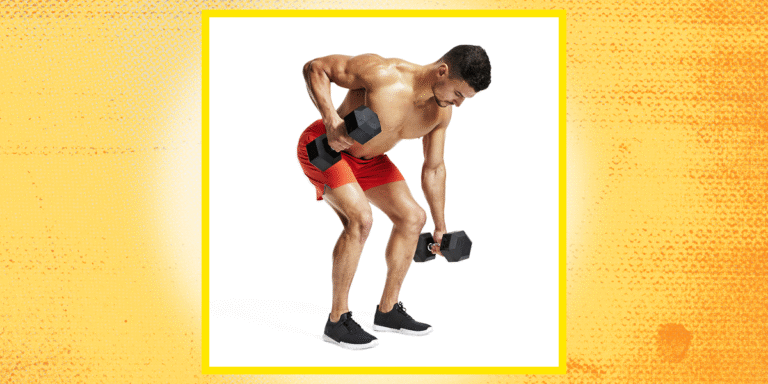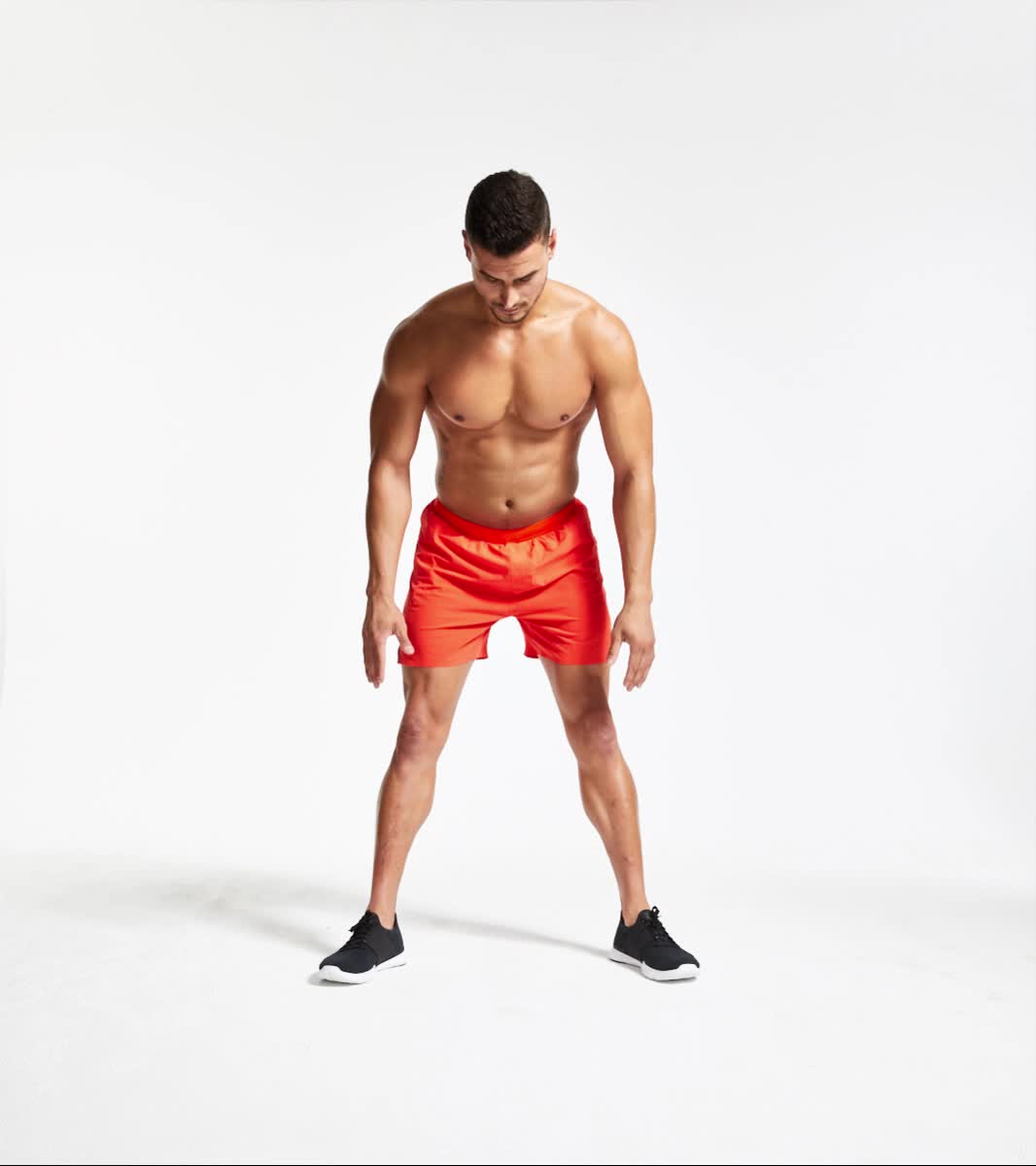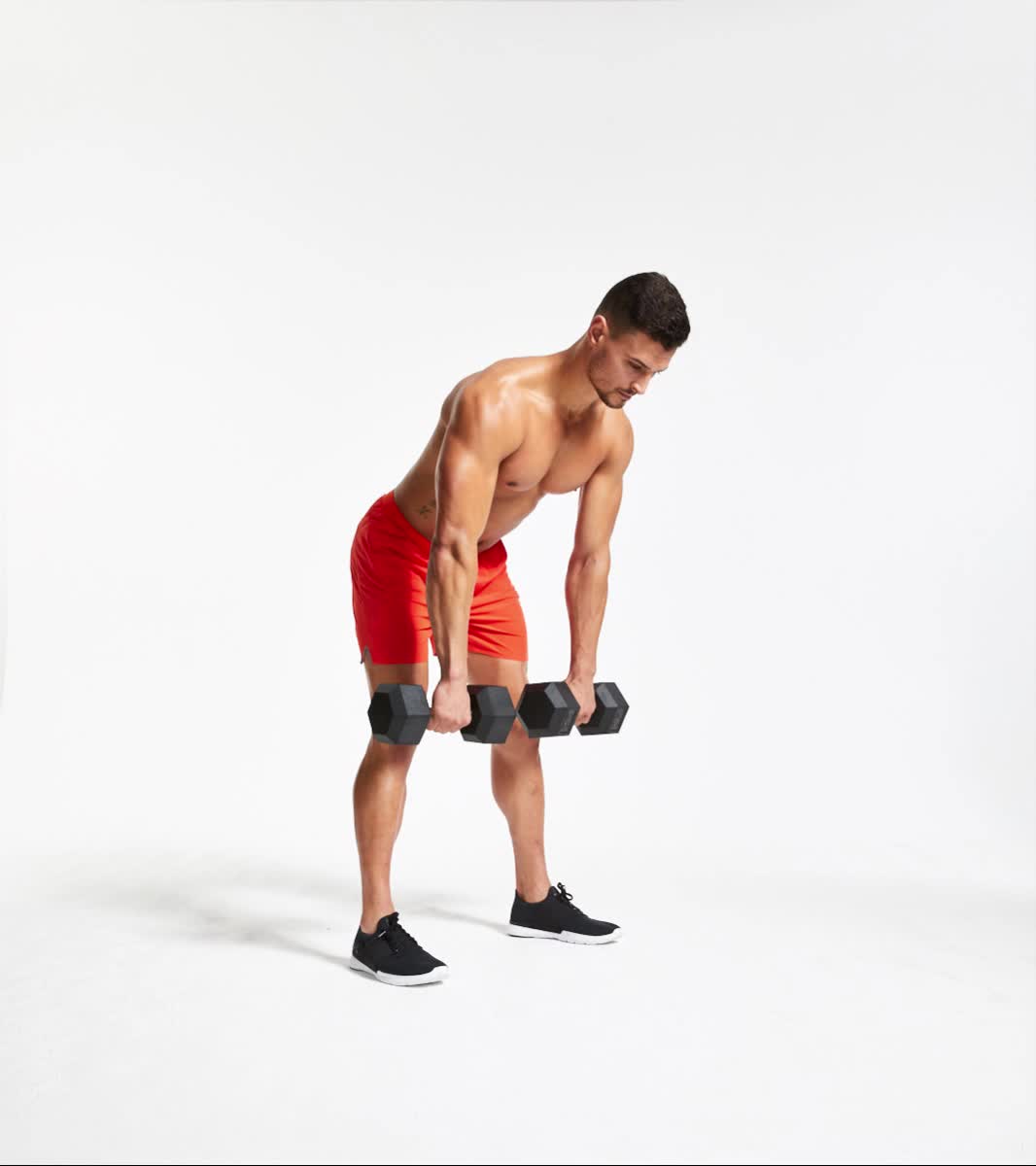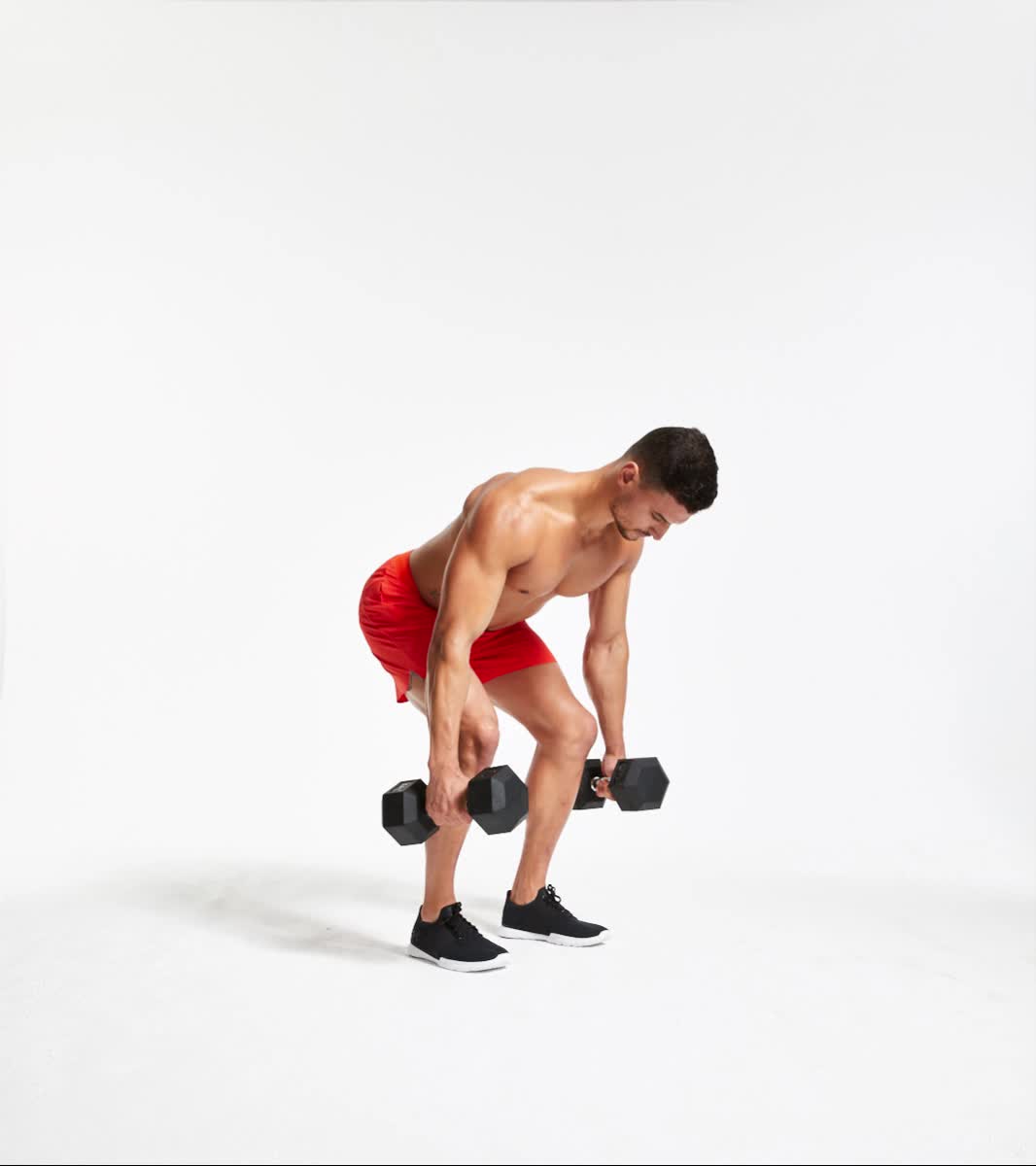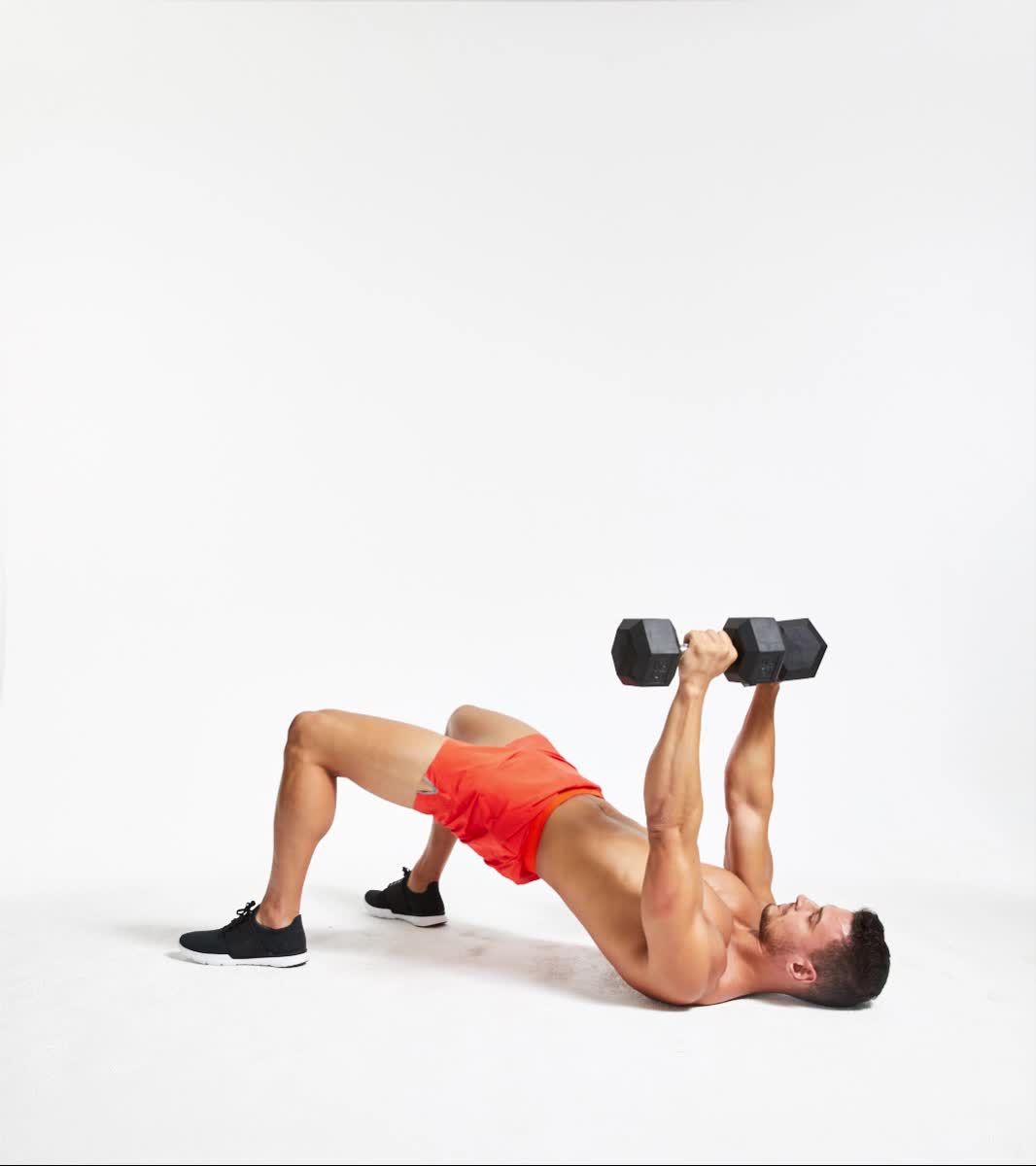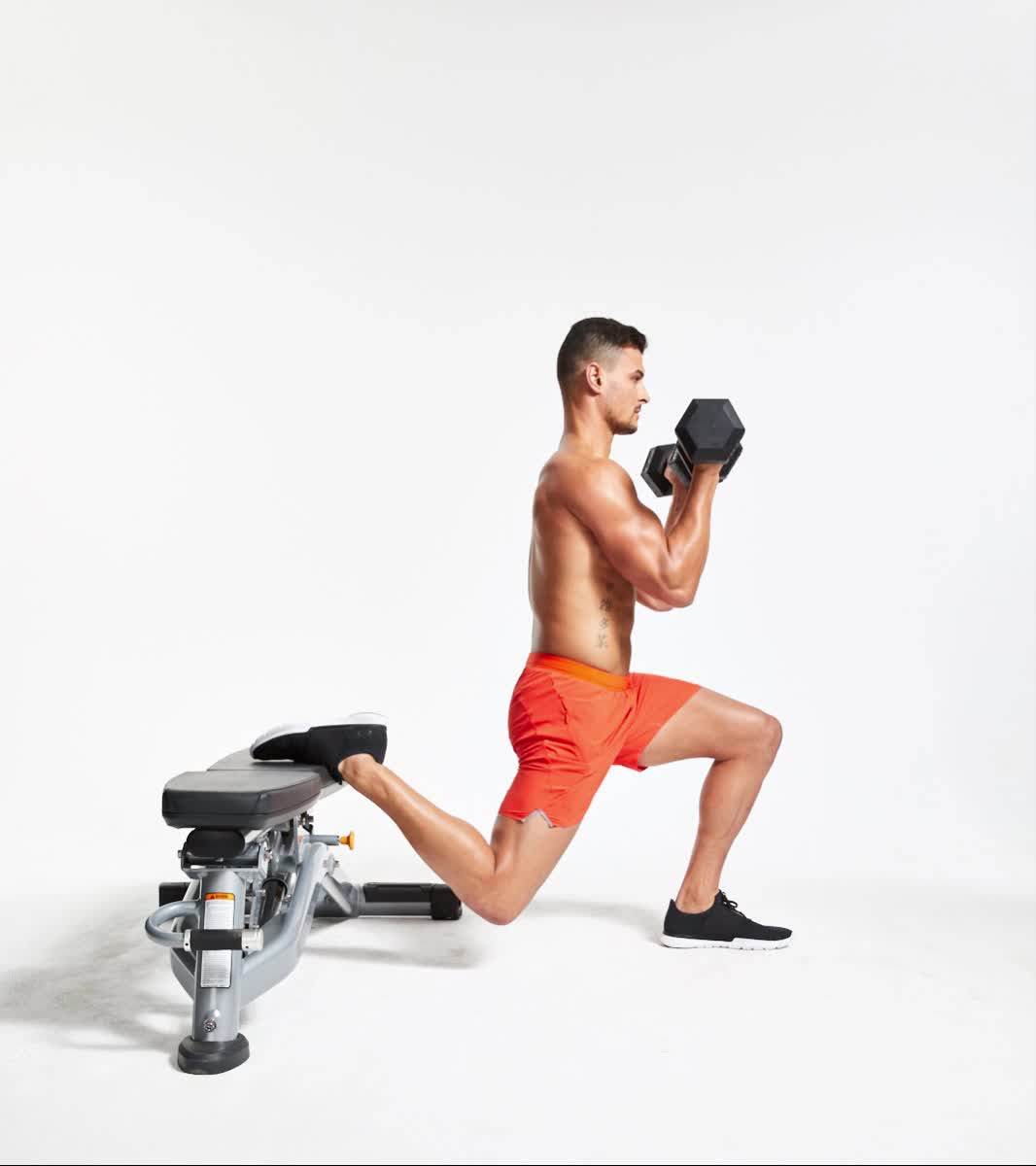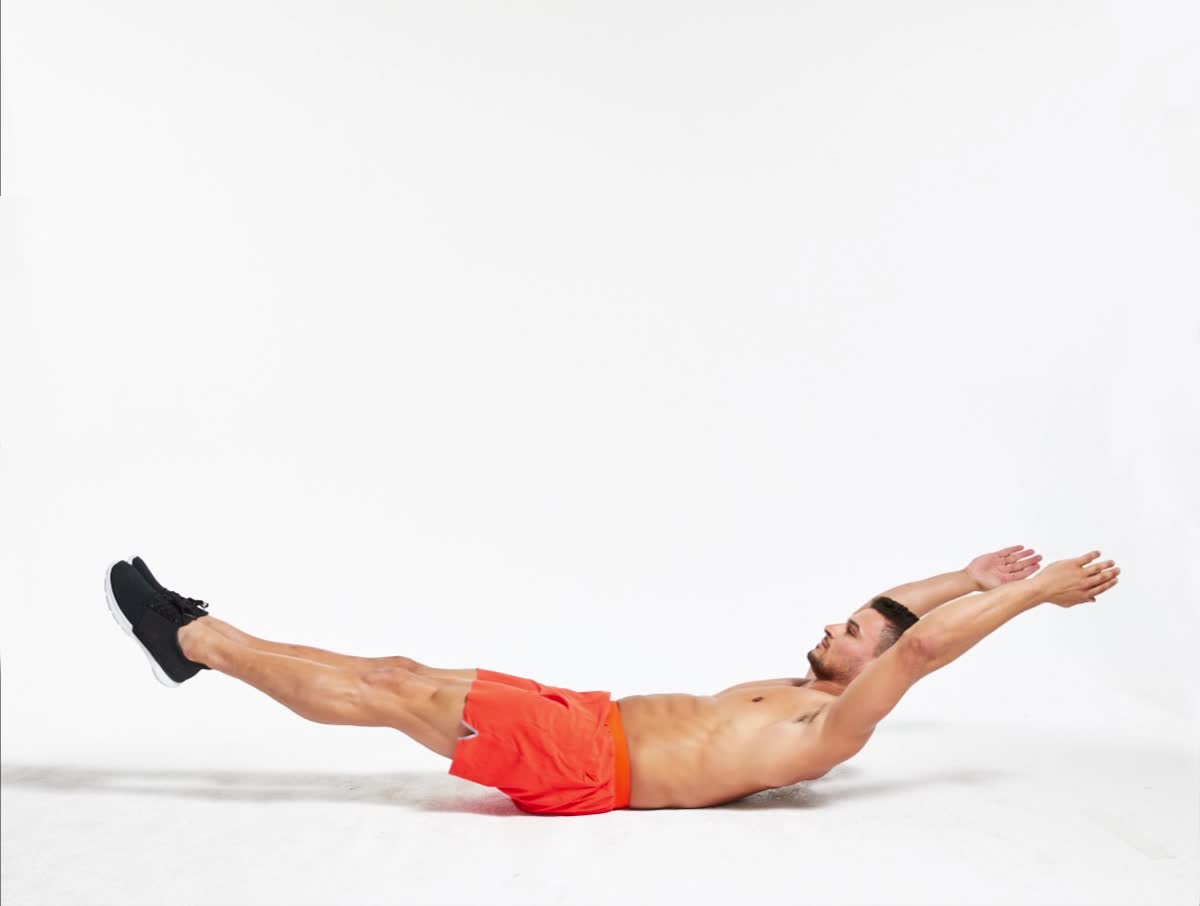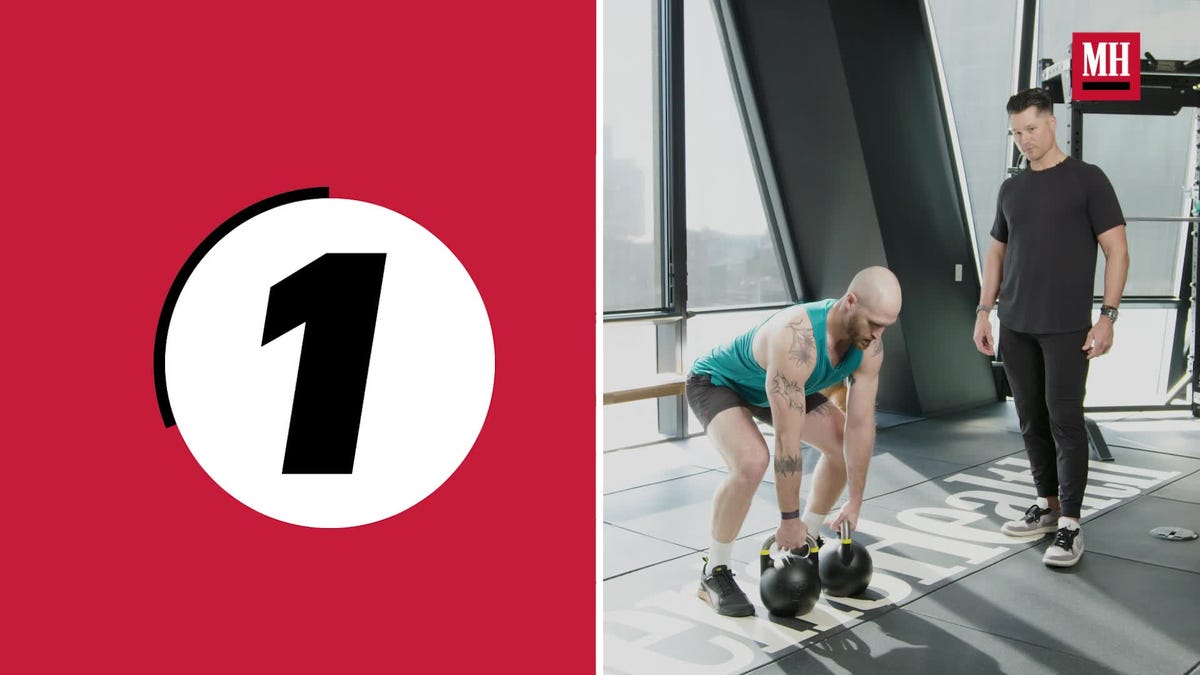PLANNING A SMART workout takes more than just effort. Don’t just move from station to station trying moves at random—a training split designed to accomplish a specific goal will yield the best results. If building strength and muscle is your objective, you might follow a program that separates your training days into different muscle groups. If general fitness gains and overall health are your focus, a full-body workout approach (which will target multiple muscle groups in one session) can be a tried-and-true path to success. That’s especially the case if you’re low on time or you can only train a few days per week.
A competent full-body training split can’t just be a mishmash of movements cherrypicked from a general list of exercises. Instead, you should base your total-body routine around different movement patterns. These are the different functions your body has, namely: hinging, squatting, pushing, pulling, and carrying. This allows you to maximize your training efficiency, since you’re using each exercise to fulfill a different physical need, and makes it easier to build out a routine by slotting in appropriate exercises into each movement category.
This type of balanced approach allows you to train hard, recover, then do it again. You might not wind up with the same massive muscles as a bodybuilder or prodigious strength like a powerlifter, but you’ll move better while building plenty of muscle and strength for your everyday needs.
The Full-Body, Smart Movement Dumbbell Workout
This full-body routine, designed by Sean Garner, N.S.C.A.-C.P.T., emphasizes four key ways you move: a push, a pull, a hip hinge, and a squat. You’ll also target your abs, and you will redline your heart rate with bursts of cardio. The result: awakened muscles and lubricated joints, setting you up for a fitness reset.
Directions
Do the 3-minute warmup, then do 3 rounds of the workout circuit. Do this workout 3 times a week for the next 4 weeks. Pay close attention to the additional cues from MH fitness director Ebenezer Samuel, C.S.C.S. to level-up the movements and maximize your gains.
The Warmup
Do each drill for 60 seconds. Don’t count reps; focus on form and take your time.
1. T-Spine Rotation to Downward Dog
How to Do It:
- Start in pushup position.
- Keeping your left leg straight, place your right foot just outside your right hand. Hold.
- Lift your right arm and reach for the ceiling. Hold, then return to pushup position.
- Shift your feet forward slightly, then raise your hips high. Try to form a straight line from your hands through your hips while also trying to keep your legs straight.
- Hold, then return to the start.
- That’s 1 rep.
2. Toe-Touch Squat
How to Do It:
- Start standing, feet about shoulder-width apart, arms held in front of you.
- Keeping your back flat, bend your knees slightly and hinge forward at your hips until your hands touch your toes.
- When they do, bend at the knees so you finish in a low squat position.
- Reach your arms overhead.
- Stand back up.
- That’s 1 rep.
3. Sprint Buildup
How to Do It:
- Start standing. For 15 seconds, march slowly in place, lifting each knee as high as you can on each step.
- Then jog in place for 15 seconds.
- Finish by speeding up to an all-out sprint for 30 seconds, moving as quickly as you can. Aim to lift each foot up as fast as possible once it touches the floor.
Eb says: “During the march, lift each knee so it’s at least as high as your hip. Pause, balancing on your grounded foot. It’s an underrated challenge.”
Strength
Do the exercises in order. Rest for 60 seconds between rounds. Each week, on all moves except the hollow body hold, reduce the reps you do for each exercise by 1 and slightly increase the weight.
1. Dumbbell Romanian Deadlift
How to Do It:
- Stand holding medium-weight dumbbells at your sides, feet hip-width apart, core braced, knees slightly bent. This is the start.
- Hinge at your hips and push your butt backward, lowering your torso.
- Hinge until you feel a slight stretch in your hamstrings.
- Pause, then stand up, squeezing your glutes.
- That’s 1 rep; do 12.
2. Alternating Dumbbell Row
How to Do It:
- Stand holding medium-weight dumbbells. Hinge at your hips until your torso is almost parallel to the floor. This is the start.
- Squeeze your shoulder blades and row the right dumbbell to your chest.
- Lower it and repeat with the left dumbbell.
- That’s 1 rep; do 12.
Eb says: “This is great core work, too. Contract your abs hard one very rep and fight the urge to rotate your torso as you row the weight upward.”
3. Side-Plank Press
How to Do It:
- Start in a left-side plank, your left elbow on the floor and your torso and hips tight, a light dumbbell in front of you.
- Grasp the dumbbell with your right hand. Continue pressing your hips upward as you lift the dumbbell off the floor and pull it close to your right pec.
- Press it toward the ceiling, then return it to the floor.
- That’s 1 rep; do 12 per side.
4. Glute Bridge Floor Press
How to Do It:
- Lie on the floor holding medium-weight dumbbells, upper arms on the floor, elbows bent 90 degrees.
- Tighten your glutes and push your hips upward.
- Press the dumbbells upward.
- Pause, then lower them back to the start.
- That’s 1 rep; do 12.
5. Bulgarian Split Squat
How to Do It:
- Place your right foot on a bench or box that’s about knee height, bending your knee slightly, and step your left foot about 18 inches away. Your left leg should be almost straight.
- Hold medium-weight dumbbells at your shoulders. Bend your left knee, sitting back; your right knee will bend more as you do this and nearly touch the floor.
- Hold when your left thigh is parallel to the floor, then stand back up.
- That’s 1 rep; do 12 per side.
Eb says: “This move shouldn’t just build muscle; try to feel a strong stretch in your back leg’s hamstring and hip flexor.”
6. Hollow Body Hold
How to Do It:
- Start lying on your back, arms and legs extended.
- Tighten your abs, pressing your lower back into the floor as you do so. This should lift your legs off the floor; work to keep them straight.
- Lift your shoulder blades off the floor as well; keep extending your arms back as you do this.
- Hold for 30 seconds.
- That’s 1 rep; do 3 to 5.
Benefits of Full-Body Workouts
Full-body workouts allow you to train multiple muscle groups together, which can be more efficient for improving overall fitness than workouts that focus on individual muscle groups. You’ll be able to address multiple needs in one session, instead of spreading out multiple muscle groups across different training days.
This is a great construct for people with busy schedules and more general workout goals, who are more focused on improving their overall health and fitness rather than building muscle or achieving specific strength objectives.
Who Should Do Full-Body Workouts
Full-body workouts are a great option for busy guys who only have a limited amount of time for training. You’re able to address all of your major muscle groups, recover, then do it again. They’re also great for beginners, since you’ll be able to work efficiently, implementing only the essential movement patterns without being lost in muscle minutiae.
But full-body workouts aren’t just a time-saving solution. If you’re looking to shake up your workouts or implement another modality into your plan while still keeping your resistance training consistent, full-body splits can be a solution.
Limits of Full-Body Workouts
While full-body workouts allow you to check a lot of boxes for your overall fitness, you won’t be able to home in on specific points of focus as well as you would with different types of workout splits. That means you won’t be able to achieve strength and muscle gains as you would with a plan focused on specific muscle groups (the bro or bodybuilder split), an upper/lower split, or a push-pull-legs split.
You’ll also need to take time to recover between full-body workout days if you want to be able to train at full-strength, so if you want to be in the gym every day, you’ll need to find a different split.
Can You Do a Full-Body Workout Every Day?
You can do a full-body workout every time you exercise, but that doesn’t mean that you should be training this way every single day of the week. You’ll have to recover between workout sessions—in the case of the program outlined here, one day of rest between each session.
That said, you’ll be able to train those muscle groups again sooner than you might with a training splits that focuses on individual muscle groups. You don’t need to be completely sedentary to recover, either; consider active recovery like a walk or run on the days you’re not training to stay moving.
Read the full article here


